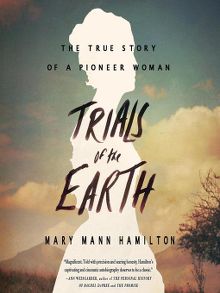Title: Murder Wears Mittens (Seaside Knitters Society #1)
Author: Sally Goldenbaum
Publisher: Kensington, 2017. 272 pages.
Source: electronic ARC through Great Escapes free blog tours
 Publisher's Blurb:
Publisher's Blurb:As autumn washes over coastal Sea Harbor, Massachusetts, the Seaside Knitters anticipate a relaxing off-season. But when murder shatters the peace, the craftiest bunch in town must unravel a killer’s deadly scheme . . .
After retrieving fresh lobster nets from a local Laundromat, Cass Halloran rushes to attend a last-minute gathering with her knitting circle. But Cass can’t stop worrying about the lonely boy seen hanging around the dryers, and the school uniform he left behind in a hurry. When the ladies return the lost clothing the next day, they find the child and his younger sister alone, seemingly abandoned by their mother . . .
The knitters intend to facilitate a family reunion, not investigate a crime. But the death of Dolores Cardozo, a recluse from the edge of town, throws the group for a loop. Especially when the missing mother and one of their own become tied to the victim’s hidden fortune—and her murder . . .
Before scandalous secrets break bonds and rumors tear Sea Harbor apart, the Seaside Knitters need to string together the truth about Dolores—while preventing a greedy murderer from making another move!
* Includes a knitting pattern *
My Review:
This is a nice village cozy with a twist--a group detective. The four members of the Seaside Knitters work together, and share top billing, as they solve this mystery that disturbs the peace of their small New England village. In fact, at first I had some trouble keeping everyone straight--it seemed like every character who was introduced was equally important, and my summer-vacation brain had trouble sorting them out. Fortunately, the author helps with this by providing a comprehensive "Cast of Characters" at the beginning, and by halfway through they had emerged in my mind as distinct people.
The mystery is pretty well worked out, with a reasonably convincing motive and a pretty clear track to the solution (I do object to books where the solution comes in a sudden leap that the reader can't follow; this one had a clear trail to follow all the way). In point of fact, I worked it out well ahead of the sleuths, as well as sorting out the general outline of the only main red herring, but that didn't stop me from being interested in how the author would get there.
I do have some quibbles with this book. For one thing, although it says it's the first in the series, it isn't. I had to do some sleuthing of my own to realize that it's the continuation of a series with a new publisher. That would explain why there was so evidently a lot of history with these people (including another murder in their past) that I didn't know about. I think it would be better to read the ones that come before first.
I was more troubled by what I see as poor editing, in the form of too many slightly mis-used words, or sound-alikes, like "jived" for "jibed" or "low and behold" for "lo and behold." This happened enough to distract me a bit, though I'd be the first to admit I'm a little OCD about that type of thing.
As for the knitting pattern, this reader is much better with a bike wrench than any form of handiwork, and has no ability whatsoever to read a knitting pattern, let alone evaluate it. I'm guessing it will be lovely, and it does make a nice change from recipes.
My Recommendation:
This is for those who like village cozies with a good sense of place and a whiff of sea air about them.
 About The Author
About The Author
Sally Goldenbaum was born on the shores
of Lake Michigan, in Manitowoc, WI, to a homemaker mother and a
ship-building father. Although she now lives in landlocked Prairie
Village, KS, her longing for lakes and the sea is satisfied in part by
writing the USA Today bestselling Seaside Knitters Mystery series ,
set on Cape Ann, MA. She is a sometime philosophy teacher, a knitter,
and an editor, and the author of more than thirty novels. Her fictional
knitting friends are teaching her the intricacies of women’s friendship,
the mysteries of small-town living, and the very best way to pick up
dropped stitches on a lacy knit shawl.
,
set on Cape Ann, MA. She is a sometime philosophy teacher, a knitter,
and an editor, and the author of more than thirty novels. Her fictional
knitting friends are teaching her the intricacies of women’s friendship,
the mysteries of small-town living, and the very best way to pick up
dropped stitches on a lacy knit shawl.
Follow Sally
WebpageTwitter Facebook
There is a Rafflecopter Giveaway for this book!
a Rafflecopter giveaway













































